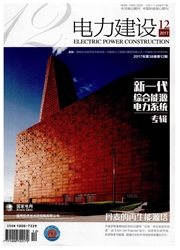

 中文摘要:
中文摘要:
供给侧改革是我国当前宏观经济的核心内容和各行业发展战略的主攻方向。分布式电源(distributed generation,DG)与微电网(micro grid,M G)以其独特的物理经济优势,将成为能源电力行业供给侧改革的重要突破口。首先分析供给侧改革背景下DG、MG与配电网(distribution network,DN)运营互动的内涵、目标和主要问题;其次研究大规模并网背景下DG-MG-DN的运营互动模式,在已有的"自发自用,余量上网"模式的基础上,引入一种基于系统贡献值评价的逐级分摊式激励机制;最后,从能量传递、信息交互和利益分享3个角度研究了支撑DG-MG-DN运营互动实现的关键技术并提出了未来研究建议。
 英文摘要:
英文摘要:
Supply-side reform is the core content of China 's current macro economy and the main direction of industries' development strategies. Distributed generation( DG) and microgrid( MG) will become the important breakthroughs in the supply-side reform of the energy and power industry because of their unique physical and economic advantages. This paper first analyzes the contents,goals and main problems of operation interaction among DG,MG and distribution network( DN) under the background of supply-side reform. Secondly,this paper studies the operation interaction mode of DG-MG-DN under the background of large-scale grid-connected. On the basis of the existing mode that the used electricity is generated by ones own,and then,the surplus power accesses to the grid,this paper introduces a progressive sharing incentive mechanism based on system contribution value. Finally,this paper studies the key technologies of the operation interaction 's implementation among DG,M G and DN from aspects of energy transfer,information interaction and benefit sharing,and proposes some suggestions for future research.
 同期刊论文项目
同期刊论文项目
 同项目期刊论文
同项目期刊论文
 期刊信息
期刊信息
